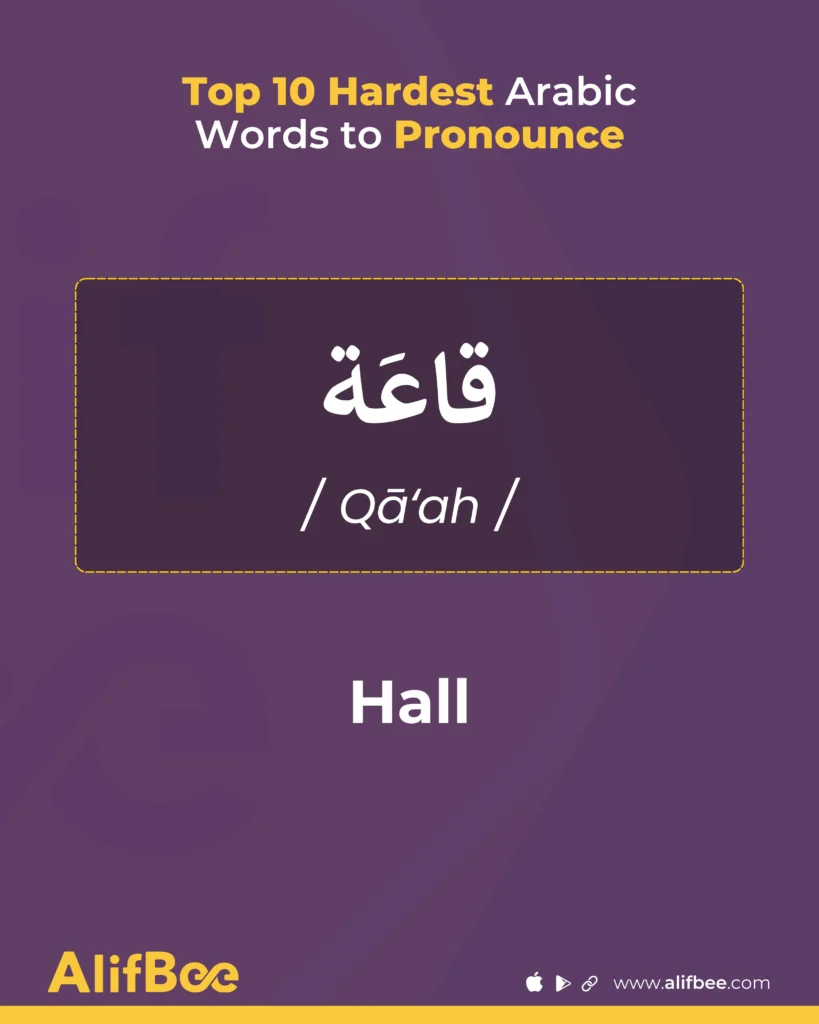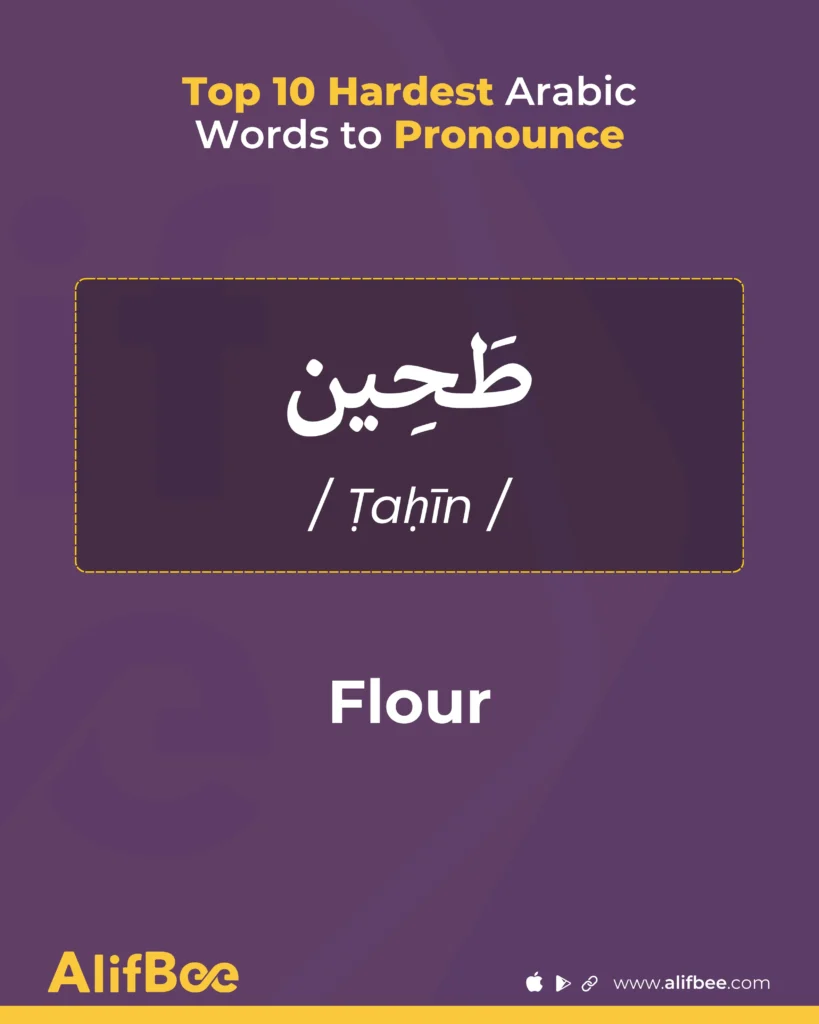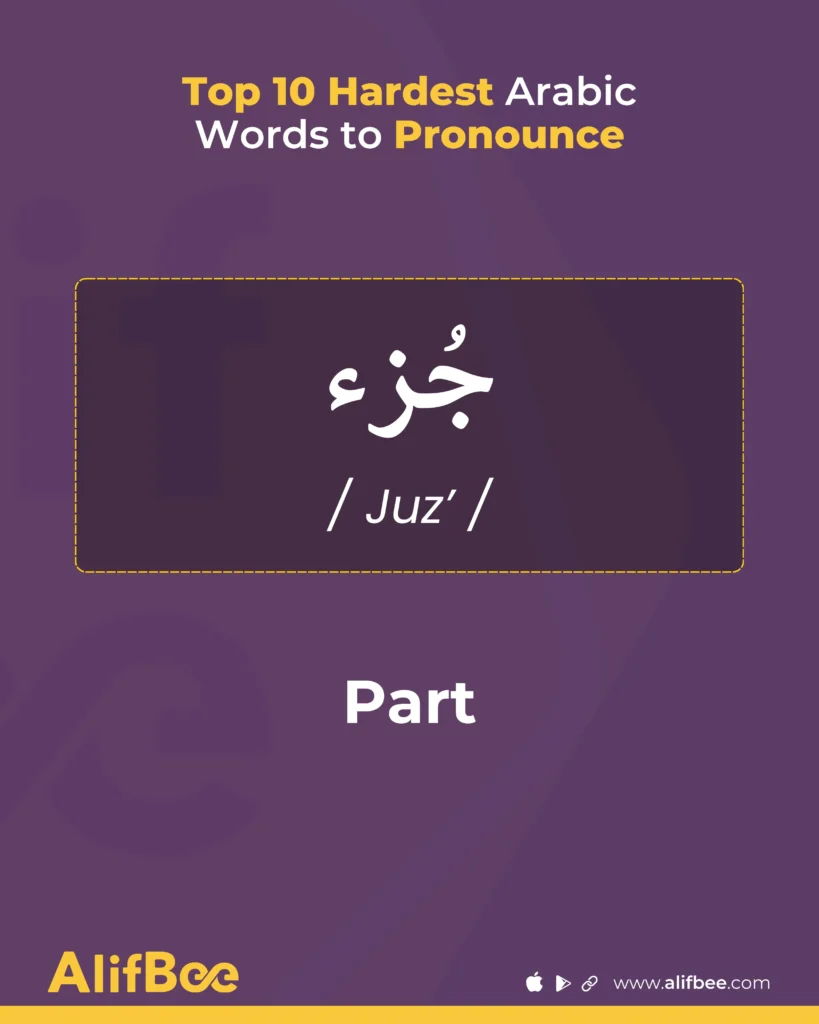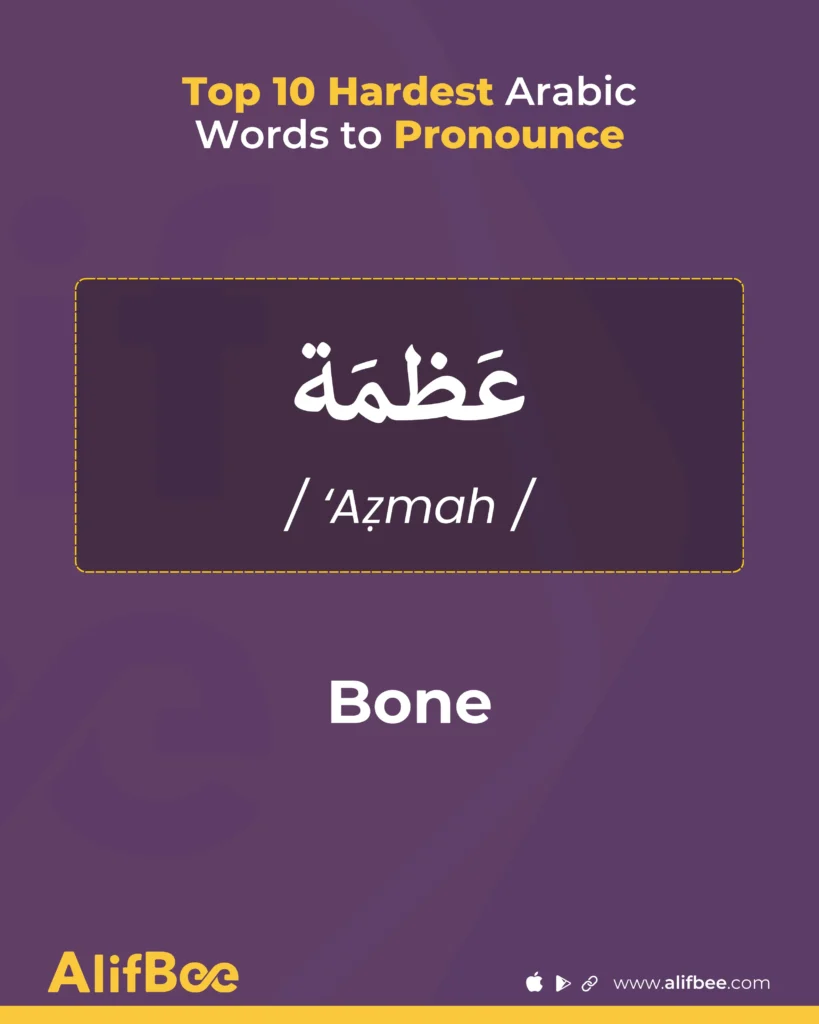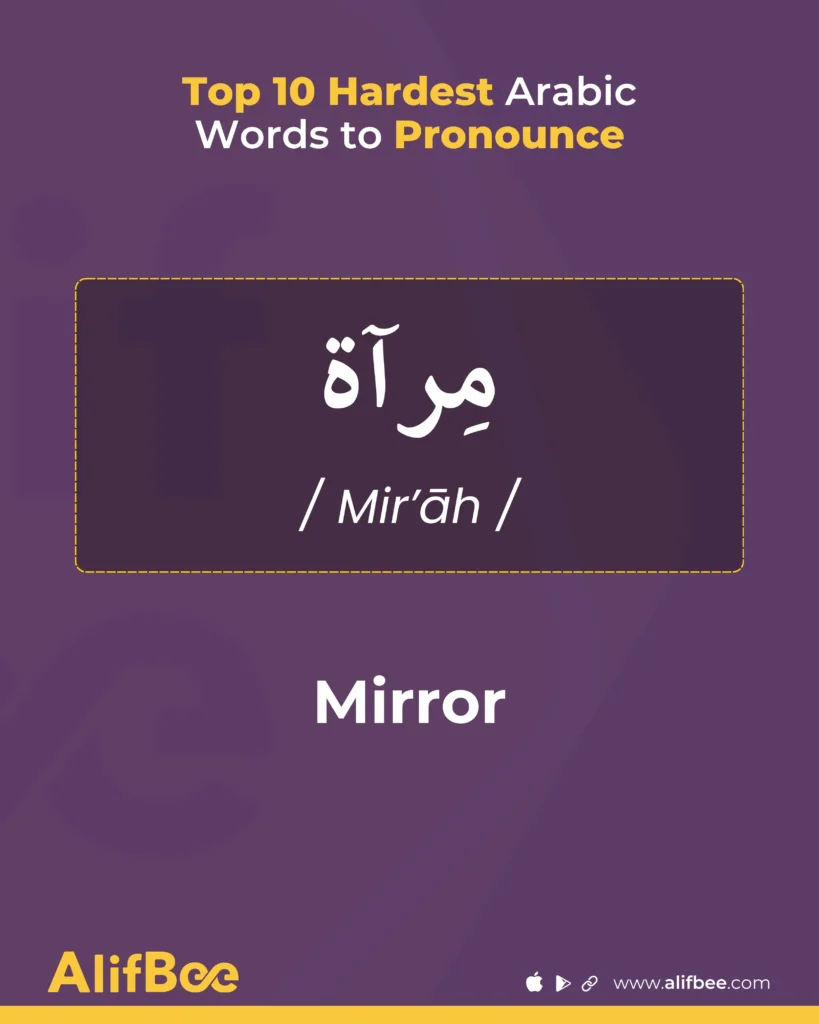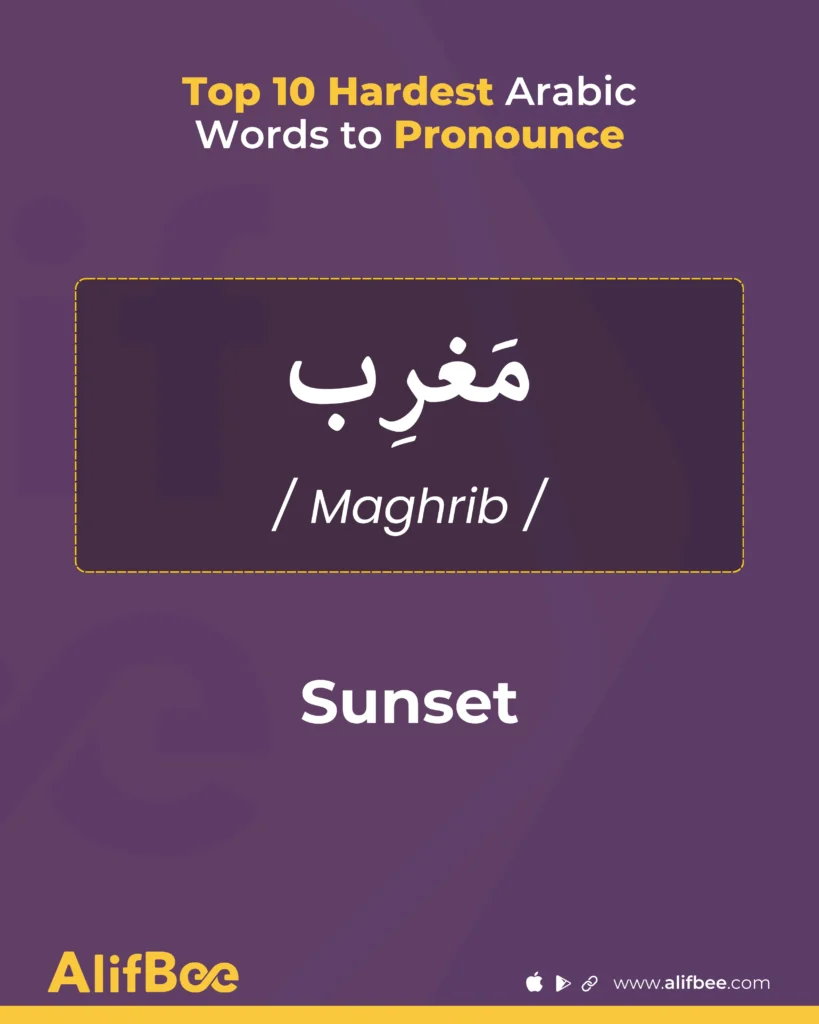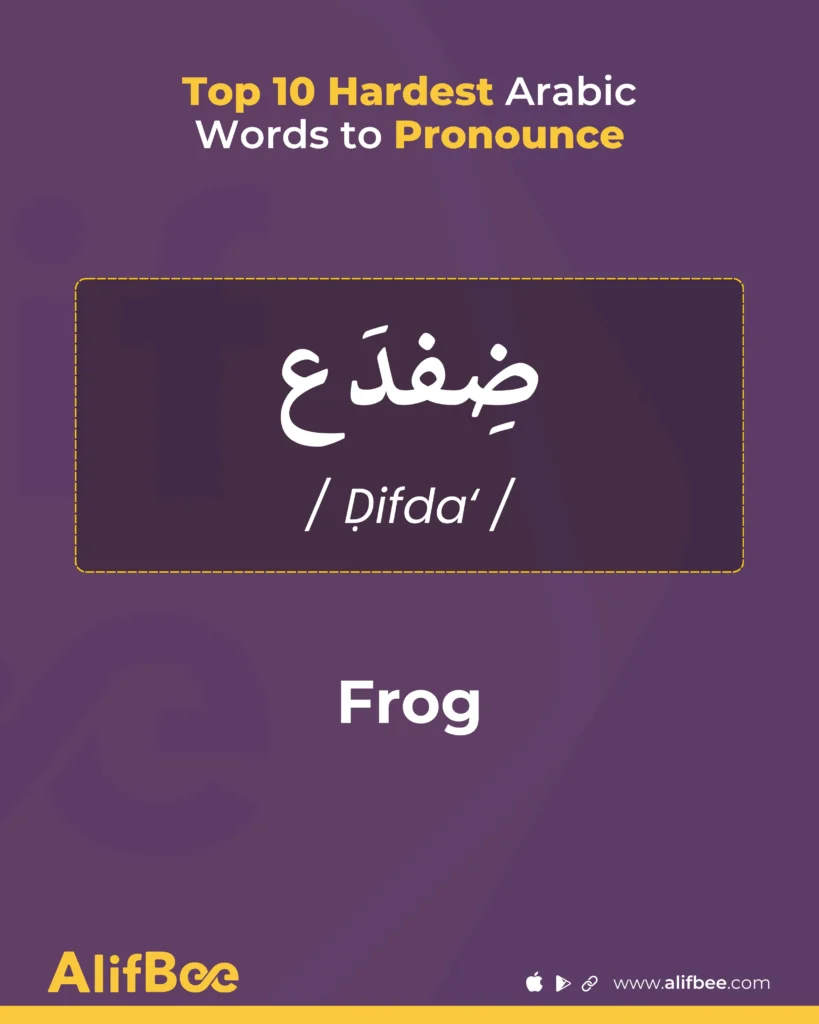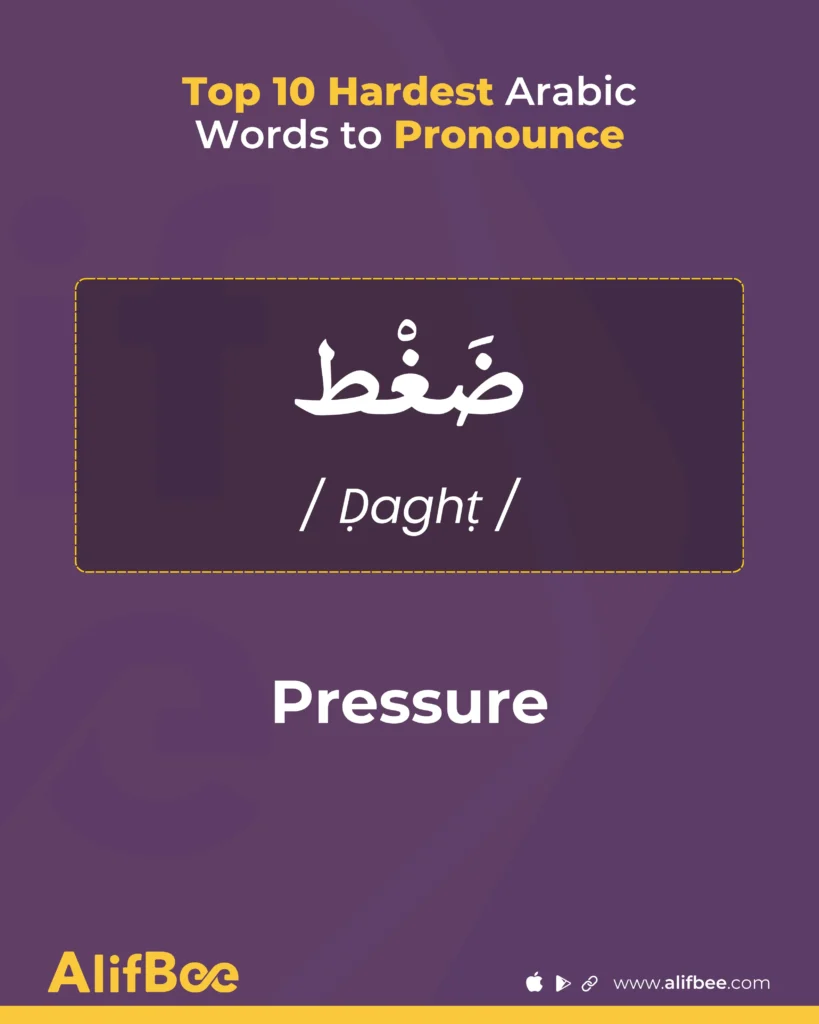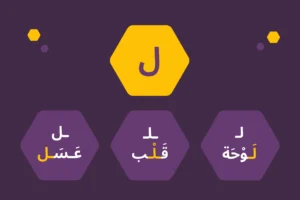Arabic has unique sounds that many English speakers find challenging — especially letters like ع (ʿayn), ق (qāf), and ض (ḍād). This guide lists the 10 hardest words to pronounce in Arabic, explains why they’re difficult, and offers clear tips for mastering them like a native. Learners can practice these words step by step to improve their pronunciation and sound more natural in Arabic.
Why Some Arabic Words Are Especially Hard
If you’ve ever tried saying قهوة (qahwa) or ضغط (ḍaghṭ) and ended up clearing your throat halfway through, you already know that Arabic pronunciation has its own personality.
Some words feel smooth, like سلام (salām), while others sound like they came from deep inside a cave.
But there’s a reason for that.
Arabic is one of the richest sound systems in the world. It has tones, depths, and textures that most languages—especially English—don’t have. So when your mouth resists certain words, it’s not your fault; it’s just not used to those movements yet.
In this post, we’ll break down 10 of the hardest Arabic words to pronounce, why they’re tricky, and how you can finally say them clearly and confidently.
Your Arabic Takeaway
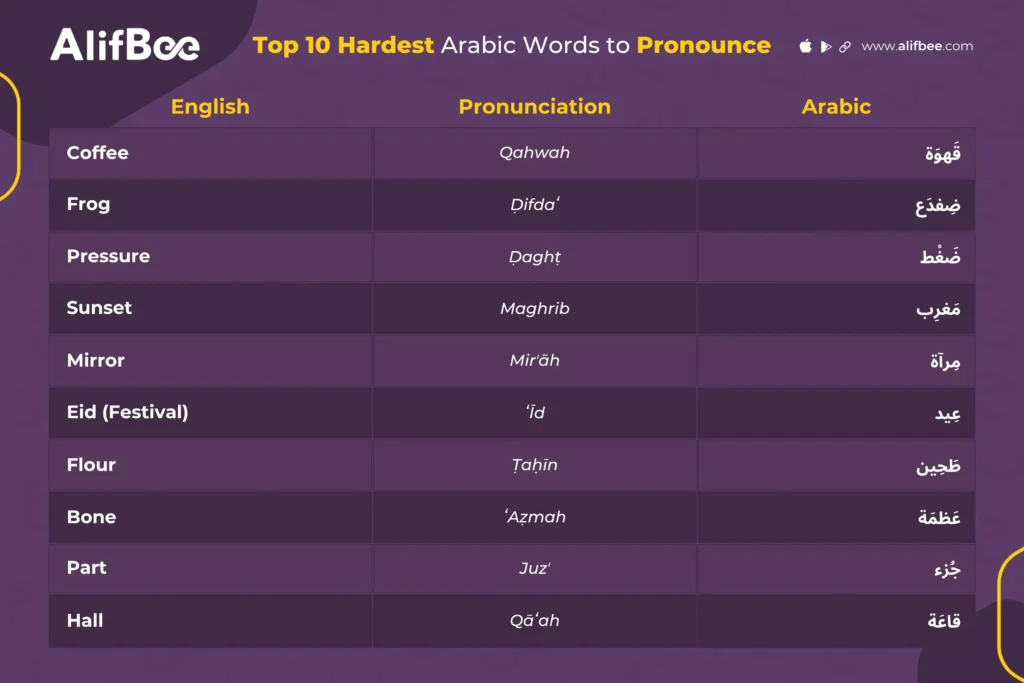
Arabic Sounds That Don’t Exist in English
Let’s start with what makes Arabic pronunciation so different.
If you grew up speaking English, your throat and tongue have never met some of the sounds Arabic loves to use. These are called non-English phonemes, and they’re the main reason many hard Arabic words feel impossible at first.
Here are the main difficult sounds in Arabic and how to say them:
Arabic Letter
Name
How to Say It
Common Mistake
ع
ʿAyn
A deep, throaty sound — tighten your throat slightly and release.
Replacing it with a simple “a.”
ح
Ḥāʾ
A strong, breathy “h” from deep in your throat.
Saying it like English “h.”
ق
Qāf
Like “k,” but further back in your throat.
Saying it too lightly, like “k.”
خ
Khāʾ
Like “ch” in Bach — a soft, raspy sound.
Making it too harsh or skipping it.
غ
Ghayn
Like a gentle gargle or the French “r.”
Mixing it with “g.”
ص
ض
ط
ظ
Emphatic letters
Heavy versions of s, d, t, and z — tongue pulled back, throat tense.
Saying them like normal letters.
Tip: Try standing in front of a mirror and exaggerating these sounds. You’ll see how Arabic uses muscles that English rarely does. Once you get used to them, even the most hard Arabic words will start sounding natural.
Emphatic Consonants, Assimilation & Contextual Shifts
Arabic has “light” and “heavy” sounds. When an emphatic letter like ط (ṭ) or ض (ḍ) appears, it pulls nearby vowels down into a deeper tone. That’s why ضغط (ḍaghṭ) sounds so full and throaty compared to دقة (diqqa).
You’ll also hear how some words change slightly depending on context—a process called assimilation.
For example, the Arabic article ال (al-) changes when followed by “sun letters”:
الشمس → ash-shams (not al-shams)
النور → an-nūr
For learners, that means a single “rule” doesn’t always apply everywhere.
Arabic pronunciation lives and breathes—it adjusts, bends, and dances with context. That’s what makes it musical… and sometimes, frustrating!
Top 10 Most Hardest Words to Pronounce in Arabic
Below are 10 of the hardest Arabic words that stump learners, based on feedback from AlifBee users and many Arabic teachers.
You’ll see why they’re hard, how they’re often mispronounced, and a simple way to fix each one.
Coffee
qahwa
قَهوَة
This little word is famous for being difficult!
The letter ق (qāf) comes from the back of the throat, not the front like the English k. To get it right, try to make it deep and crisp.
Then comes هـ (h) and و (w) right after each other, which is another challenge.
Tip: Say it slowly — qa-hwa. Feel the “q” start deep in your throat, then breathe out softly for the “h”.
Frog
ḍifda‘
ضِفدَع
The word ḍifda‘ is a tongue twister!
It starts with letter ض (ḍ) — one of the hardest Arabic sounds, made with the sides of your tongue pressed against your teeth.
It also ends with letter ع (‘ayn) — a deep sound from the throat.
Tip: Practice each part separately: ḍif … da‘ … then join them together.
Pressure
ḍaght
ضَغط
Sunset
maghrib
مَغرِب
The tricky part is the غ (gh) followed by ر (r).
Many Arabic learners mix “gh” with “g” or “kh,” but it’s smoother — imagine a gentle growl from your throat.
Tip: Say ma-gh-rib in three beats. Let the “r” roll lightly after the “gh”.
Mirror
mir’ah
مِرآة
This word contains the ء (hamza) — a tiny pause in your throat, like the break in “uh-oh.”
Many Arabic learners forget to stop briefly before saying the next vowel.
Tip: Say mir (pause) ah. That tiny stop makes a big difference!
Festival
‘īd
عِيد
It starts with the deep ع (‘ayn) — one of the most unique Arabic sounds.
It comes from tightening your throat slightly before letting the sound out.
Tip: Think of starting a word with a tiny grunt, then stretch the long “ee”: ‘iiid.
Flour
ṭaḥīn
طَحِين
Here you’ve got two strong sounds: ط (ṭ) and ح (ḥ).
The first is “heavy,” the second is a strong “h” from the throat.
Tip: Open your mouth wide for ṭa, then breathe strongly from your throat for ḥīn.
Bone
‘aẓmah
عَظمَة
This one starts with ع (‘ayn) and includes ظ (ẓ) — a heavy “z” sound made with your tongue pressed slightly back.
Tip: Say ‘a (from your throat) and then ẓmah (with a strong, thick “z”).
Part
juz’
جُزء
The challenge here is the ء (hamza) — that little pause again.
If you say it too fast, it disappears!
Tip: Say juz (pause) ʔ. You should feel a small stop in your throat at the end.
Hall
qā‘a
قاعَة
It starts with ق (q) — deep in the throat — and has ع (‘ayn) in the middle.
Together, they make a perfect test for your Arabic throat muscles!
Tip: Say qā-‘a slowly. Feel the sound move from the very back (q) to the middle of your throat (‘).
Practice Strategies & Drills
Your Arabic pronunciation improves through muscle memory — not theory. The more your tongue and throat move in Arabic patterns, the easier the hardest sounds become. Here are some practical, proven ways to train your ear and mouth at the same time:
1. Isolate the Difficult Sounds First
Don’t rush into full words. Start by practicing the “problem sounds” on their own — especially ʿayn (ع), ḍād (ض), and qāf (ق).
Repeat them slowly and exaggerate at first. For example, try saying:
ʿa, ʿu, ʿi — qā, qū, qī — ḍa, ḍu, ḍi
This helps your muscles learn exactly where in your throat or mouth each sound comes from.
2. Use Minimal Pairs
Minimal pairs are words that differ by just one sound — like قلب (qalb) “heart” and كلب (kalb) “dog.”
Practicing these side-by-side trains your ear to catch tiny differences that change meaning completely. It’s also a great way to spot your own blind spots in Arabic pronunciation.
3. Record and Compare Yourself
Use your phone or the AlifBee app to record short clips. Then play the native audio and listen closely — are your vowels shorter, or your throat too tight?
Don’t worry if it sounds awkward at first; awareness is the first step to improvement.
4. Slow-Motion Blending
Break tricky words into chunks.
Say ḍa-gh-ṭ, qa-hwa, or ma-gh-rib slowly, then blend them together at normal speed.
This helps your brain connect sound + motion smoothly without panic.
5. Try Arabic Tongue-Twisters
Turn learning into a game!
Use your own list — for example:
ḍifdaʿ ḍaghṭ ʿaẓmah — try saying it three times in a row.
It trains coordination, rhythm, and confidence.
6. Shadow Native Speakers
Choose a short video clip or AlifBee audio, listen, and immediately mimic every sound and pause.
This “shadowing” technique builds native-like rhythm, not just clear sounds.
At first, you’ll feel like you’re imitating — but soon, you’ll own the accent.
Final word
Arabic pronunciation isn’t about speed — it’s about placement.
Focus on where each sound happens:
- Deep in the throat → (ع, غ, ق)
- Sides of the tongue → (ض)
- Soft exhale → (ح, هـ)
With daily practice, your tongue and throat will get used to these movements — and soon, saying qahwa or ḍifda‘ will feel as natural as saying “coffee” or “frog”!
Want to hear and practice every word from this list with native pronunciation?
Download the AlifBee App and start your free 14-day trial.
You’ll get interactive audio drills, real-time feedback, and mini pronunciation games to help you sound more natural every day.

